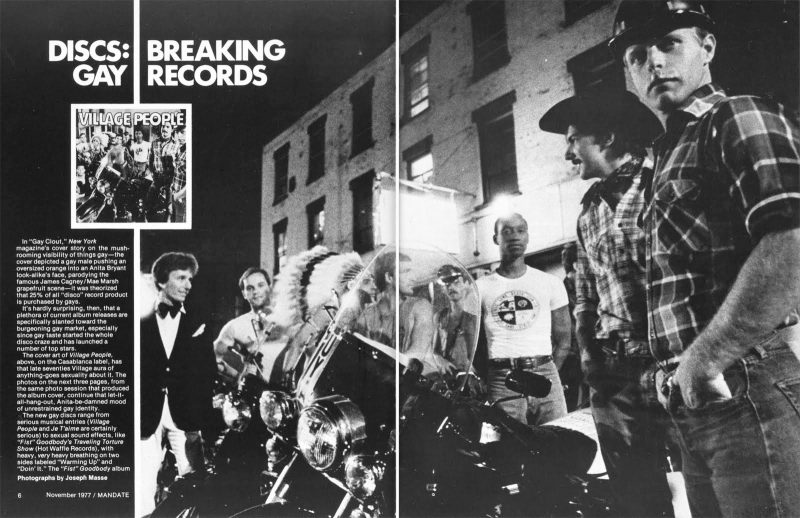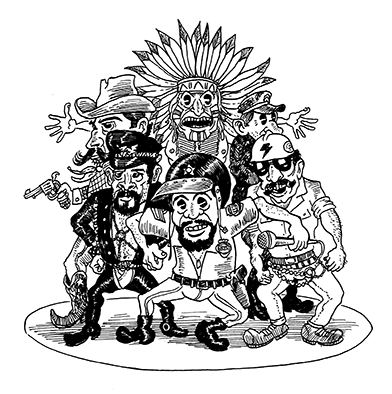Jacques Morali and Henri Belolo had been spending a lot of time in Greenwich Village that spring. It reminded the two music producers of Paris, and besides, the gay clubs had the best DJs. Though Henri, unlike his business partner, was straight, both men were infatuated with fashion, America, and, above all, disco.
It was a warm day in 1977, and they were on the make, having moved to New York from Paris after one of their groups, a Philadelphia trio called the Ritchie Family, made it to number five on the Billboard charts with a disco cover of a song from the 1930s. The Ritchie Family had been a hit, but now the producers were in search of a new act. Morali had always wanted to write songs for a gay audience, and though rock-and-roll record sales depended on radio play, Belolo knew that if a song made people at the discos rush onto the floor, it could break the bank.

The producers spotted him on Christopher Street, of course. They heard bells ringing as the man passed by, a Native American headdress flapping behind him. He had a leather loincloth wrapped around his narrow hips, and bells tied to his ankles. He was heading into the Anvil. “Oh god, he is good-looking—I’m thirsty!” Jacques said to Henri.
Inside the Anvil, they watched Felipe Rose, the skinny guy who’d lured them there, take his place behind the bar. The DJ was playing a mix of what sounded like Native American tribal music and the disco Morali and Belolo revered. Every so often, Rose jumped onto the bar to dance. Next to the French producers sat a guy with a thick mustache, wearing a Stetson and boots. He looked like the Marlboro Man. Another patron could have just come from a construction site, if his jeans and boots hadn’t been so clean and tight. My god, look at those characters, Belolo thought. It was as if every American male stereotype was there, welcoming them to the Village.
Looking around the room, the producers were thinking the same thing. Belolo grabbed a napkin and jotted down: “Indian, Construction Worker, Leatherman, Cowboy, Cop, Sailor.” Morali walked over to the Indian (Rose was, in fact, Lakota) who’d enticed them into the bar. He wasn’t shy. “Hey you, Indian—you want to be in a group?”
*
Like most stories of gay* life in New York between 1970 and 1990, the legend of the Village People has its origins in the Stonewall riots of 1969—“Our...
You have reached your article limit
Sign up for a digital subscription and continue reading all new issues, plus our entire archives, for just $1.50/month.
Already a subscriber? Sign in





